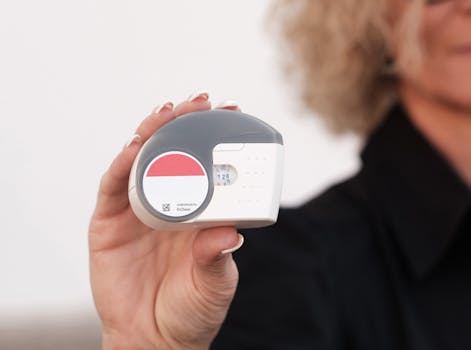
Table of Contents
- Smart Home Devices
- Health and Fitness Apps
- Wearable Technology
- Virtual Reality and Augmented Reality
- Sustainable Technology
Smart Home Devices


Popular smart home devices include smart speakers, smart lighting solutions, and security cameras that can be accessed remotely. These technologies not only make life easier but also enhance safety and energy efficiency. By automating mundane tasks, smart home devices free up time for more meaningful activities, ultimately improving your quality of life.
Furthermore, as more people embrace remote work, smart home technology has become essential for creating a comfortable and productive workspace at home. Devices such as smart plugs and automated blinds can help optimize your work environment, making it easier to focus and stay organized.
Health and Fitness Apps
The advent of smartphones has given rise to a plethora of health and fitness apps designed to help users monitor their wellbeing. Whether you’re looking to track your daily steps, log your meals, or manage stress, there’s an app for that. These applications provide valuable insights into your health and encourage you to make healthier lifestyle choices.
For instance, apps like MyFitnessPal allow users to log their food intake and exercise, while meditation apps like Headspace promote mental wellness through guided mindfulness practices. The accessibility of these tools has empowered individuals to take control of their health like never before.
Moreover, many fitness apps now integrate with wearable devices, providing a comprehensive view of your health metrics. This synergy between technology and health has opened up opportunities for personalized fitness plans and wellness strategies tailored to individual needs.
Wearable Technology

With features like GPS tracking, exercise monitoring, and health alerts, wearables encourage an active lifestyle by providing real-time feedback. They can motivate users to reach their fitness goals and maintain a healthy routine. Additionally, advancements in technology have made wearables more stylish and comfortable, appealing to a broader audience.
As technology continues to evolve, we can expect wearables to become even more sophisticated, integrating cutting-edge health monitoring capabilities that could potentially save lives by alerting users to health issues before they become serious.
Virtual Reality and Augmented Reality

For instance, VR can be used for virtual travel experiences, allowing users to explore new places from the comfort of their homes. AR applications can enhance learning by overlaying digital information onto the real world, making education more interactive and engaging.
In the realm of mental health, VR therapy is gaining traction as a treatment for anxiety and phobias, providing a safe space for individuals to confront their fears. The possibilities for VR and AR to improve our lifestyle are vast and still growing.
Sustainable Technology

For instance, solar panels and smart energy management systems allow homeowners to harness renewable energy sources, significantly lowering energy costs and reducing reliance on fossil fuels. Additionally, advancements in recycling technology are making it easier to manage waste and promote sustainability.
By adopting sustainable technologies, individuals can contribute to a healthier planet while also enjoying the benefits of cost savings and increased energy efficiency. This shift towards sustainability not only enhances lifestyle but also ensures a better future for generations to come.







